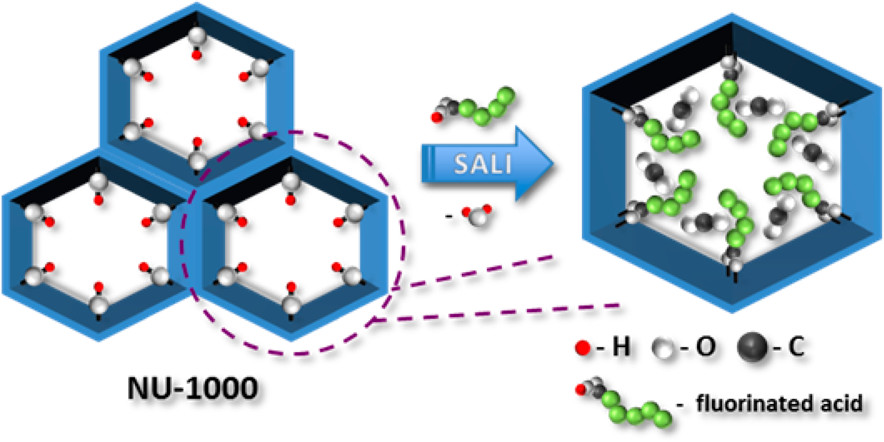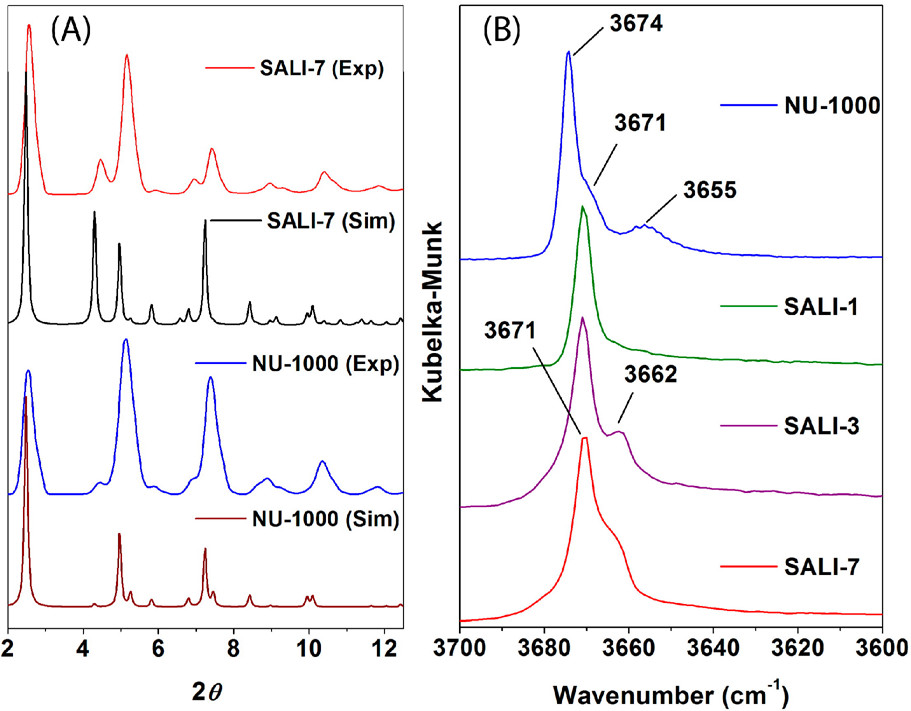Home >
News > Perfluoroalkane Functionalization of NU-1000 via Solvent-Assisted Ligand Incorporation: Synthesis and CO₂ Adsorption Studies
Perfluoroalkane Functionalization of NU-1000 via Solvent-Assisted Ligand Incorporation: Synthesis and CO₂ Adsorption Studies
Summary:
The authors from Northwestern University and collaborating institutions developed a series of perfluoroalkane-functionalized NU-1000 metal–organic frameworks (MOFs) via a novel solvent-assisted ligand incorporation (SALI) method, achieving enhanced CO₂ adsorption performance for potential carbon capture applications.

Background:
1. To address the challenge of introducing functional groups into MOFs without compromising structural integrity, previous researchers explored postsynthetic modification strategies such as dative bonding and linker exchange. While these methods achieved partial success, they often suffered from limited stability, incomplete functionalization, or structural degradation.
2. In this study, the authors proposed an innovative SALI method to incorporate perfluoroalkane carboxylates into the Zr₆ nodes of NU-1000, resulting in stable, functionalized MOFs with improved CO₂ adsorption properties.
Research Content:
1. Synthesis:
The authors synthesized SALI-n materials by reacting NU-1000 with perfluoroalkane carboxylic acids of varying chain lengths (C1–C9) in DMF at 60–80 °C, achieving functionalization of ~4 carboxylates per Zr₆ node.
2. Characterizations:
1) BET surface area decreased from 2320 m²/g (NU-1000) to 870 m²/g (SALI-9); pore diameter and volume also reduced with increasing chain length.
2) PXRD confirmed retention of crystallinity; DRIFTS showed disappearance of terminal –OH peaks, confirming functionalization at the Zr₆ node.
3) CO₂ adsorption isotherms showed enhanced low-pressure uptake; Qst (isosteric heat of adsorption) increased with chain length, reaching 34 kJ/mol for SALI-9.
3. Application:
The materials were tested for CO₂ capture at 273 K. SALI-n samples exhibited higher volumetric CO₂ uptake at low pressure (~0.15 bar) and increased Qst values compared to unmodified NU-1000, indicating stronger CO₂–framework interactions.
4. Mechanism:
The enhanced CO₂ adsorption was attributed to the presence of C–F dipoles and confinement effects within the mesopores. Theoretical modeling confirmed that CO₂ primarily binds near the Zr₆ nodes, with longer perfluoroalkane chains enhancing interaction strength.

Outlook:
This work demonstrates a robust and versatile functionalization strategy (SALI) for Zr-based MOFs, enabling precise tuning of pore chemistry and gas adsorption properties. The SALI approach holds promise for designing next-generation MOFs for catalysis, separations, and gas storage.
Perfluoroalkane Functionalization of NU-1000 via Solvent-Assisted Ligand Incorporation: Synthesis and CO₂ Adsorption Studies
Authors: Pravas Deria, Joseph E. Mondloch, Emmanuel Tylianakis, Pritha Ghosh, Wojciech Bury, Randall Q. Snurr, Joseph T. Hupp, Omar K. Farha
DOI: 10.1021/ja408959g
Link: https://doi.org/10.1021/ja408959g
The above review is for academic progress sharing. For any errors or copyright issues, please contact us for correction or removal.

